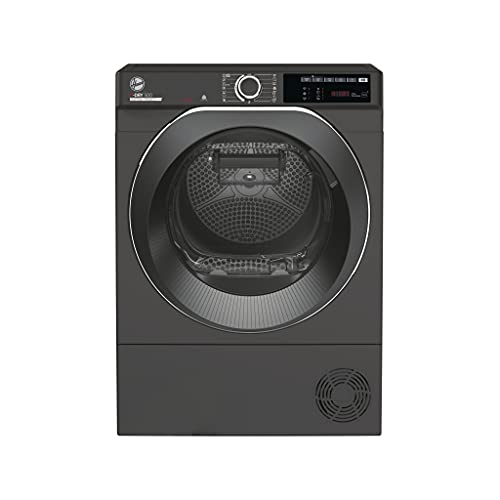5 Washer Dryer Heat Pump Projects For Every Budget

Heat Pump Washer Dryer
They use a compressor and refrigerants to convert heat energy from hot air into cold. The condensing process removes the moisture in your clothes. They're typically 28% more efficient than vented dryers.
These dryers do not vent outside and they are quieter than traditional vented machines. They are also suitable for apartments where it's not feasible to drill holes into walls to create vents.
Energy Efficiency
The laundry industry is searching for ways to reduce the amount of energy they use in their facilities. One solution is to replace dryers and washers with more efficient models but another option is to make use of a heat pump washer dryer to save even more energy while doing loads of laundry.
In a heat pump washer dryer, hot air is used to draw moisture out of the clothes. The air is then transported to the dryer's evaporator, which evaporates the water before cooling it. The vapor is then condensed into droplets and is gathered to be drained. This system consumes less energy than a dryer that blasts humid, warm air outside via the vent.
This means that heat pump washer dryers use approximately 28 percent less electricity than standard washer dryers. This savings on energy can add up, especially when the dryer is used often enough to pay off the initial investment.
The heat pump washer dryers are energy-efficient because they don't need to generate heat by themselves using electric coils or burners. They transfer thermal energy through a closed loop. They collect and recycle hot air from the inside of the drum, and then transfer it to the evaporator, and return to the drum to repeat the process.
They are also more eco green than traditional dryers that take conditioned outdoor air and discharge it through the vent. The air used has already consumed a lot energy and money in the form of air conditioning to cool it down or a furnace to heat the temperature inside the building.
A hybrid sorption heat-pump washer dryer is more efficient than an electric model. The sorption process is labor-intensive, but can be combined with heat pump technology to make a more efficient machine. Khouya & Cranston were the first to pioneer this combination of heat pumps and sorption. They studied the effects of various parameters, including optical efficiency and concentration ratio on the performance of the system.
Condensation
Unlike conventional dryers that exhaust out of the vent the heat pump dryers recirculate the heated air, making them much better for the environment as well as less expensive to run over the course of. It's important to know that recirculating hot water can cause condensation, which could cause mildew or mold.
tumble dryer with heat pump that condensation happens is that the recirculated hot air will always lose energy to internal losses. This may cause it to overcompensate for the heat that's lost through the evaporation of clothes, causing the temperature of the recirculating air to rise. As the hot air circulates over the cold side, it absorbs the water vapour from wet clothes. It turns into liquid water, which then drips into the lint tube or tray.
When the lint tray or tube gets full, it needs to be cleared out to prevent mold and mildew issues. The trays must also be cleaned regularly. This process is fairly simple and the majority of trays can be removed for easy cleaning. It is also important to keep your dryer's lint filter free of dust. This will help prevent blockages and condensate.
A second problem that can result from the condensation produced by heat pump dryers is that they may take longer to dry a load than conventional dryers. They operate at a lower temperature, which can make it more difficult to dry the clothes.
It's also possible that the condensation is caused by an air-conditioning system, which needs to be checked for leakage. If the duct is damaged, it could be leaking water and causing the condensing issue. The duct for ventilation must be sealed properly to prevent water from leaking into the home. It is essential to keep the venting hose in a straight position and not allow it to hang too low. This could lead to condensation. The vent duct must also be inspected for blockages, as lint and debris can accumulate over time and cause a venting issue.
Noise
The heat pump in your dryer creates low humming sounds when it is running. This is a normal sound and is an indication that the system is working correctly.
If you can hear your machine rattling or scraping, during your washing cycle, it could mean that your machine is rattling against a wall, or another appliance. If this is the case, you should move your dryer a few inches from any obstructions, and this will stop the rattling. If the noise is coming from the machine, it could be an indication that you have some loose parts or an obstruction to your fan.
Overloading your Miele dryer with clothes can also cause it to rattle. This can cause the dryer to work harder in order to rotate. Try to take off some of the clothing to help reduce the load.
A rattling sound could be due to the drum bearings that can wear out over time, causing an eerie sound. Check for these to see whether they're in good condition and if not, think about hiring an appliance repair technician to replace the bearings.
The baffles in your dryer can create a rattling sound when drying. These baffles are great to stop your clothes from sticking to each them and aid in the tumbling and fluffying of your clothing. If your baffles are worn or have loose change, they can be pushed against the side of the drum and create a clumping or the sound of a thumping. Examine the baffles to determine whether any items are stuck in them and clean them as necessary.
If the sound originates from your blower wheel, this is a sign that it's either out of balance or loose. This part circulates the air through the dryer, and out of the exhaust vent. If it's blocked with dust, it could make a an eerie sound.
If you have exhausted all of these troubleshooting tips and your Miele dryer is still making loud rattling or grinding sounds it could be due to a problem with the part. It is likely to require the removal of the dryer drum and cabinet in order to identify the source of the problem. Contact an appliance repair expert to get help.
Maintenance

Simple maintenance tips can help avoid many washer and dryer problems. Regularly cleaning the lint slot and trap will reduce drying time and help save energy. You should also follow the manufacturer's recommendations for condenser coils.
In addition to the standard lint trap, heat pumps dryers contain an additional filter that shields the intricate coils from the lint that is contained in recirculated air. The filter needs to be cleaned after every few cycles using a clean cloth and vinegar or dish soap. Maintenance of the moisture sensor is also vital. The moisture sensor is located in the door and is used to determine when a load has reached the right level of dryness. It is crucial to clean your sensor periodically with a soft, damp rag and a bit of water or mild dish soap.
If your dryer takes longer than usual to complete a cycle you may require cleaning the heat exchanger. This is a straightforward process to do once a month. You should first remove the drain hose from hole (A). Mix neutral detergent with lukewarm lukewarm and place the other end of the accessory tube in the hole (B). Then, place the other end into the hole (A). Let the mixture soak for 30 minutes, and then rinse and dry it.
